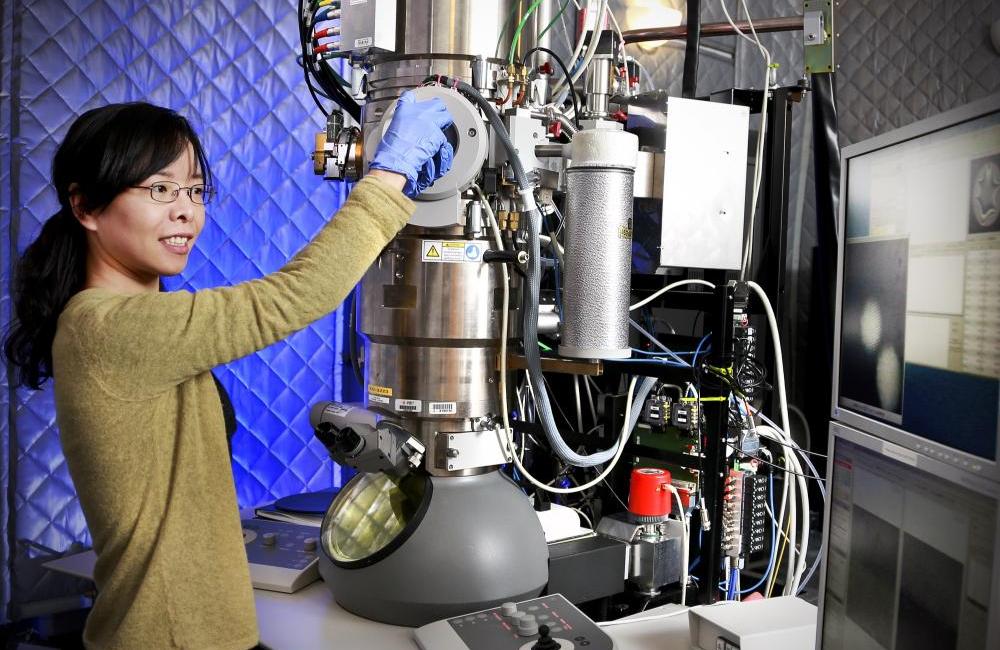Researchers sometimes need access to expertise and facilities not available at their universities, companies and institutes. To manipulate materials on the scale of nanometers—billionths of a meter—they come to the world-class experts, specialty instruments and state-of-the-art techniques at ORNL’s Center for Nanophase Materials Sciences.
Each year about 600 researchers worldwide come to CNMS to advance their work. A peer-reviewed proposal secures access to capabilities from materials synthesis and assembly, to imaging and characterization, to theory, modeling and simulation. CNMS staff support visiting scientists throughout their research.
“Most users are surprised by just how much can be done here,” CNMS Director Hans Christen said. His team focuses on helping users succeed, but ORNL staff also conduct their own research on materials that capture, transport and convert energy.
CNMS began operations in 2006. Because it is near ORNL’s neutron science and high-performance computing facilities, users can integrate these unique tools into their experiments. In fact, one-sixth of CNMS users also make use of ORNL’s neutron facilities.
The center’s nanofabrication research laboratory features clean rooms with tools for building structures at the nanoscale to microscale (billionths to millions of a meter). “We’re approaching the ability to control structure precisely over nanometers to meters,” CNMS’s Michael Simpson said. “With cutting-edge technologies we’re developing, we are pushing down to the molecular scale. The ultimate goal is to be able to de ne the position of every atom within very complex systems.”
Advanced instruments—for microscopy, spectroscopy, tomography and more—let users investigate and understand nanomaterials at a whole new level.
“When users come to the CNMS, they have access to all of these techniques and the experts who invented them,” said Stephen Jesse, who develops techniques for scanning probe microscopes.
Liz Norred from the University of Tennessee used CNMS to fabricate microfluidic devices for rigorous analysis of gene expression. “It’s rare to see so many resources all in the same facility,” she said. “It’s even rarer to have so many people willing to help you with those resources.”
See here for more information.
See also:
- Fundamentally strong: ORNL dives into basic science
- Oak Ridge Leadership Computing Facility: Tackling big questions with computation
- ORNL’s Neutron Science User Facilities: Neutrons unlock the mysteries of materials


